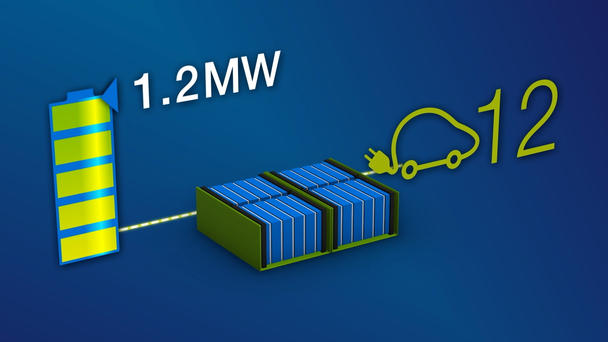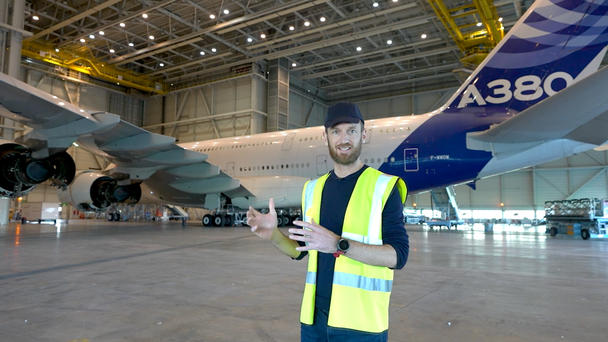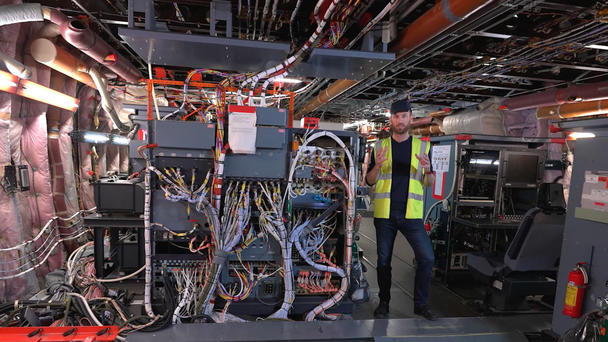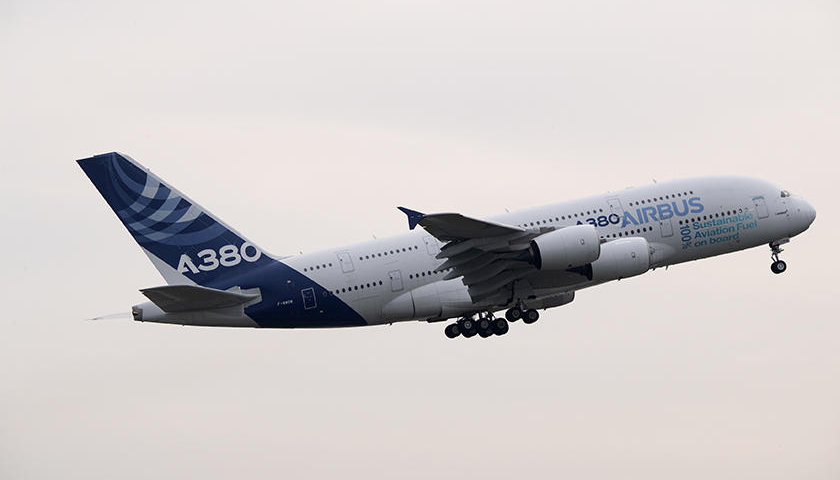In late 2023, the ZEROe teams powered on the iron pod, the future hydrogen-propulsion system designed for Airbus’ electric concept aircraft. As well as the hydrogen fuel cell system, the iron pod contains the electric motors needed to spin a propeller and the units that control and keep them cool. Its successful power on at 1.2 megawatts is a pivotal step on Airbus’ ZEROe roadmap to put a hydrogen-propulsion aircraft into service by 2035.
The power of the world’s most abundant element
In 2020, Airbus shared four hydrogen-powered aircraft concepts with the public. Three used hydrogen combustion and hybrid engines for power, and the fourth was fully electric, using hydrogen fuel cells and a propeller propulsion system. These fuel cells work by transforming the hydrogen into electricity through a chemical reaction. The by-product of the reaction is simple H2O, resulting in almost zero emissions.
The huge potential of hydrogen fuel cells to decarbonise aviation made it one of the key technologies chosen to be further explored for the ZEROe demonstrator – but there was a challenge. Although hydrogen fuel cells already existed on the market when the project began, none provided the energy needed to power an aircraft while remaining at an acceptable weight level. So in October 2020, Airbus created Aerostack, a joint venture with ElringKlinger, to develop hydrogen fuel cell stacks that would be at the heart of the electric propulsion system on a ZEROe aircraft.
Extensive testing on the fuel cell system took place in Ottobrunn, Germany, just 13 kilometres from Munich, at the E-Aircraft System House (EAS). The Airbus facility is the largest test house for alternative propulsion systems and fuels in Europe, and it is where the main components of the propulsion system that will power the demonstrator’s propellers are tested.
In June 2023, Airbus announced the successful test campaign of the hydrogen fuel cell system, which reached its full-power level of 1.2 megawatts. It was the most powerful test ever achieved in aviation of a fuel cell designed for large-scale aircraft, and set the stage for the next big step of the project: integrating the full propulsion system with the electrical motor.
Airbus’ hydrogen-powered aircraft is taking shape. Last time, we talked about one of the most promising propulsion candidates, which is the hydrogen fuel cell. Discover how Airbus is putting them to the test before flight.
Hydrogen powers on the iron pod
The big day took place at the end of 2023, closing out the year on a high for the ZEROe team. After successfully completing testing of the fuel cell system at 1.2 megawatts in June and the powertrain at 1 megawatt in October, the electric motors of the iron pod were powered on with the hydrogen fuel cells for the first time.
“It was a huge moment for us because the architecture and design principles of the system are the same as those that we will see in the final design,” says Mathias Andriamisaina, Head of Testing and Demonstration on the ZEROe project. “The complete power channel was run at 1.2 megawatts, the power we aim to test on our A380 demonstrator.”

Observing how the many systems interact during this testing is key to enabling the next steps of the project. “This process is how we learn what changes need to be made to make the technology flight-worthy,” says Hauke Peer-Luedders, Head of Fuel Cell Propulsion System for ZEROe. “We measure how the propulsion system as a whole works by testing the power needed for several different flight phases, such as takeoff, where we are reaching maximum power levels, and cruising, when we use less power but over a longer period of time.”
It has been three years since we revealed an aircraft concept 100% powered by hydrogen fuel cells. Since then, we have adhered to our initial timeline and made tremendous progress. The recent success of powering on the iron pod system at 1.2 megawatts is a crucial step towards our goal of putting a hydrogen-powered aircraft in the skies by 2035.
– Glenn Llewellyn, Vice President of ZEROe Aircraft at Airbus
Preparing for the next step
Testing will continue on this first version of the iron pod throughout 2024. Once completed, the next step for the ZEROe team will be to optimise the size, mass and qualifications of the propulsion system to meet flight specifications. Qualifications include the system’s reactions to vibration, humidity and altitude, among other factors.

Once these optimisations and tests are complete, the fuel cell propulsion system will be installed on the ZEROe multimodal flight test platform – the very first A380 ever produced by Airbus, MSN001. This will be followed by the ground testing of the systems before the pivotal stage of testing them in flight on the A380, currently scheduled for 2026.




